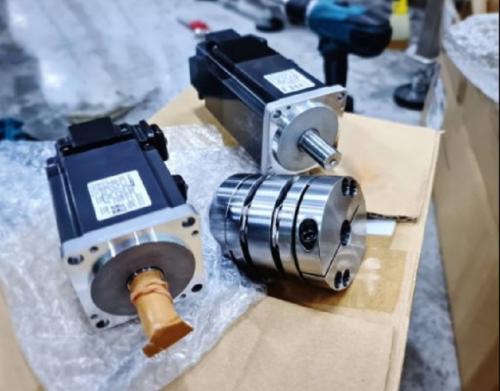How to Select the Best Servo Motor?

When the correct servo is selected for the application, servo systems provide incredible levels of speed, accuracy, and versatility in automated equipment. Unfortunately, choosing the incorrect servo can result in complex tuning, poor accuracy, or unsatisfactory results.
How can you be sure you choose the suitable servo when there are too many to choose from? Fortunately, sizing (the method of selecting the appropriate servo motor and drive) can be broken down into basic measures.
Here is how you can choose the best Mitsubishi servo motor or any other servo motor
When selecting a servo motor, there are a few things to keep in mind?
Obtain a load
Knowing the load is the first step in correctly sizing a servo motor. This can also be referred to as inertia. The inertia ratio, which is the ratio of the load inertia to the motor inertia, or Inertia Ratio = JL / JM, where JL is the moment of inertia of the load and JM is the moment of inertia of the motor, is the most significant number.
The moment of inertia of the motor can be found on the manufacturer's datasheets. The moment of inertia of the load, on the other hand, is a little more complicated. The total load inertia is calculated by adding the inertia of each part pushed by the Mitsubishi servo motor.
Determine the voltage that is needed.
The available power for the equipment is the first and easiest aspect to consider. Servos are available in three voltages: 100 volts, 200 volts, and 400 volts, and they can run on single-phase or three-phase power.
Select a servo motor with caution.
Now that the main criteria for selecting a servo motor have been established, it's time to look through the product selection guide to find a motor that meets these criteria. Several motors with identical torque and speed characteristics but different rotor inertias are frequently seen. You're done if there's a motor that's a close match.
Speed
When choosing a Fanuc Servo drive, speed, typically measured in rpm, is just as critical as the payload's weight. In general, the lower the potential torque, the higher the motor speed. Because of many factors, including back EMF, low pole counts result in higher rates and lower torques.
Precision
The accuracy of a direct drive motor is not mechanically limited. The controller's input will determine the accuracy of the motor. However, encoders are usually chosen based on how well they fit into the overall mechanical structure rather than the motor's output.
Effectiveness
A servo motor's efficiency is simply the amount of current required to produce its constant torque. This is known as the torque constant (Kt) and can be found on the datasheets of a motor. The way the coils are wired about each other is referred to as windings (in series or parallel). Windings with higher current efficiencies can't go as fast as those with lower current efficiencies.
Although higher-speed windings have lower current efficiencies, lower-speed windings have higher current efficiencies. Once the wanted speed has been prepared, the winding can be based on a more efficient alternative that meets the requirements.
Choose a motor — this time for real.
Most of the Fanuc Servo drive on hand were probably capable of much higher speeds than were needed. To get a starting gear ratio, divide the motor speed by the necessary rate and round down. The new essential torque is calculated by dividing the required torque by the gear ratio. This will reduce the number of motor options to only a few. Next, look for a motor with a good inertia ratio.
Post Your Ad Here
Comments